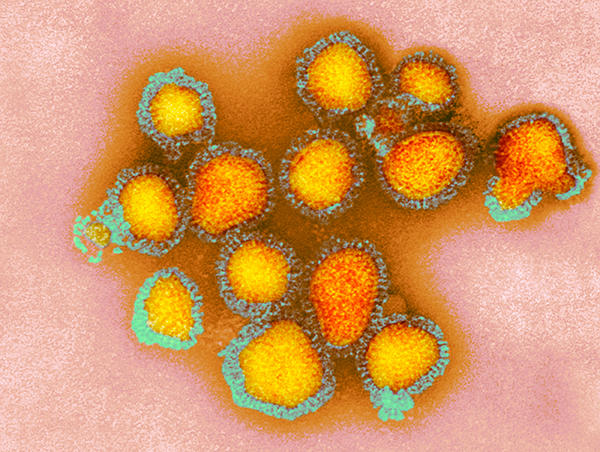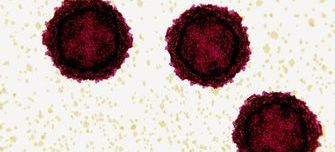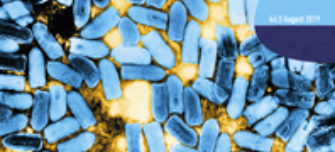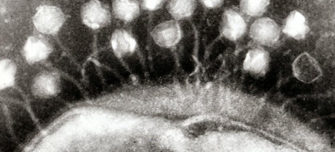Viruses
Viruses are the smallest of all the microbes. They are said to be so small that 500 million rhinoviruses (which cause the common cold) could fit on to the head of a pin. They are unique because they are only alive and able to multiply inside the cells of other living things. The cell they multiply in is called the host cell.
A virus is made up of a core of genetic material, either DNA or RNA, surrounded by a protective coat called a capsid which is made up of protein. Sometimes the capsid is surrounded by an additional spikey coat called the envelope. Viruses are capable of latching onto host cells and getting inside them.

H3N2 influenza virus particles, coloured transmission electron micrograph (TEM). Each virus consists of a nucleocapsid (protein coat) that surrounds a core of RNA (ribonucleic acid) genetic material. Surrounding the nucleocapsid is a lipid envelope that contains the glycoprotein spikes haemagglutinin (H) and neuraminidase (N). These viruses were part of the Hong Kong Flu pandemic of 1968-1969 that killed approximately one million people worldwide. H3N2 viruses are able to infect birds and mammals as well as humans. They often cause more severe infections in the young and elderly than other flu strains and can lead to increases in hospitalisations and deaths.
Viruses only exist to make more viruses. The virus particle attaches to the host cell before penetrating it. The virus then uses the host cell’s machinery to replicate its own genetic material. Once replication has been completed the virus particles leave the host by either budding or bursting out of the cell (lysis).
Budding
As the newly formed viral particle pushes against the host cell’s plasma membrane a portion adheres to it. The plasma membrane envelops the virus and becomes the viral envelope. The virus is released from the cell. This process slowly uses up the host’s cell membrane and usually leads to cell death.
Lysis
The virus particles burst out of the host cell into the extracellular space resulting in the death of the host cell. Once the virus has escaped from the host cell it is ready to enter a new cell and multiply.
Videos
Learn more about viruses
-
Polio
Polio, or poliomyelitis, is an infectious disease caused by poliovirus. Find resources relating to the virus, its spread, symptoms and prevention below.
-
Microbiology Today: Arboviruses and their Vectors
Microbiology Today August 2019 considers some of the viruses that are transmitted by arthropods and the arthropod vectors that carry them.
-
Emerging zoonotic diseases
This policy briefing outlines the increasing public health and economic threats posed by emerging zoonotic diseases.
-
Measles
Measles is a viral disease spread through inhaling viral particles from infected coughs and sneezes. The disease attacks the immune system in both children and adults. In about 1 in 15 cases, complications develop that vary from a mild ear infection to encephalitis.
-
The bacteriophage - bacteria’s worst enemy?
Bacteriophages are composed of proteins and a DNA or RNA genome that can be very simple, containing four genes, or complex, with hundreds of genes. The phages infect by injecting their genome into the bacteria which disrupts the bacteria’s normal replication cycle.
-
Rabies virus: can we treat the untreatable?
Every year, an estimated 59,000 people die from rabies. Usually contracted following a bite from an infected animal, rabies is almost always fatal in people who have not been vaccinated. Once symptoms of appear, there is little-to-no hope for the infected individual, with no treatment options currently available.
Podcasts








